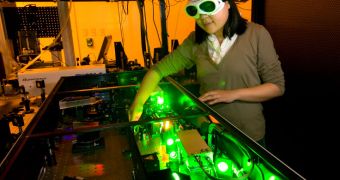A joint team of experts from the Purdue University and General Motors is currently working on developing a new harvesting system that, once applied to the exhaust pipes of average cars, will be able to produce electricity, and also reduce fuel consumption.
The device will be able to use the heat that automobiles release to generate usable electrical current, and then use the current to increase mileage and fuel efficiency, its creators say.
A three-year, $1.4 million grant from the US Department of Energy (DOE) and the National Science Foundation (NSF) has recently been awarded to the research group.
The basis of the new system will be made up of thermoelectric generators (TEG) devices, which are capable of producing current when subjected to heat. This will allow them to recharge cars' batteries and electrical systems on the go.
This means that less gas will be needed to do so, which would in turn increase the engine's efficiency, says Purdue professor of mechanical engineering and electrical and computer engineering Xianfan Xu.
He reveals that exhaust gases are heated to a temperature of about 700 degrees Celsius, or 1,300 degrees Fahrenheit, after they exist catalytic converters. The TEG devices will be placed after the converters on the exhausts.
This placement was selected because temperature levels inside the converters can exceed 1,000 degrees Celsius, and the TEG are simply not designed to function in such rough conditions.
Theoretically, the greatest fuel efficiency would be achieved if the TEG were inside the converters, so improving the generators so that they can withstand large temperatures is an important avenue of research for the group.
“The biggest challenge is system-level design – how to optimize everything to get as much heat as possible from the exhaust gas,” Xu explains of the challenges the team has to face.
“The engine exhaust has to lose as much heat as possible to the material,” he adds. The project is scheduled to begin on January 1, 2011.
The group hopes to use past studies by experts at the NSF, the Defense Advanced Research Projects Agency (DARPA) , the Air Force Office of Scientific Research and the Rolls-Royce University Technology Center as starting point for their TEG-based system.

 14 DAY TRIAL //
14 DAY TRIAL //